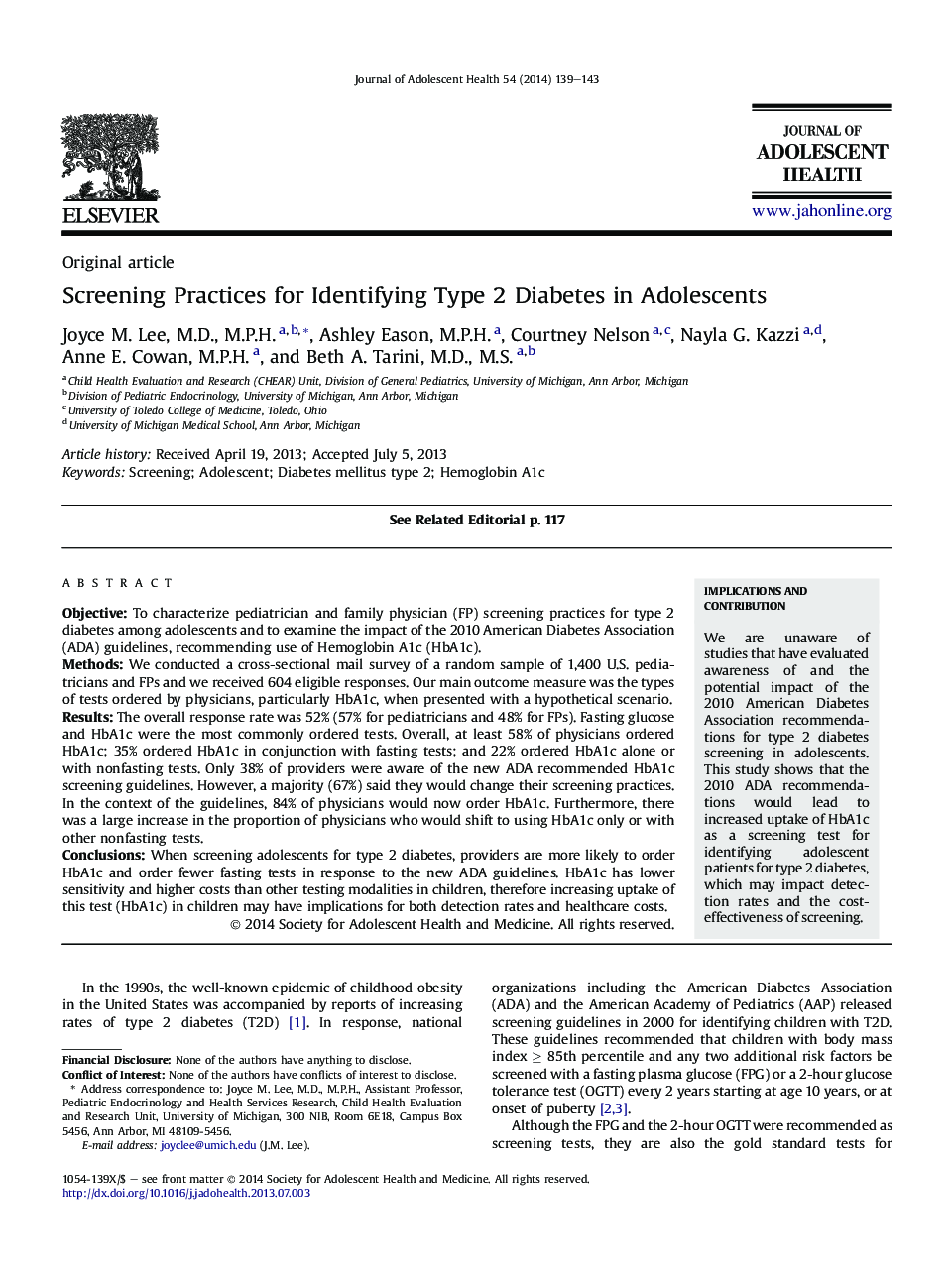| Article ID | Journal | Published Year | Pages | File Type |
|---|---|---|---|---|
| 1079083 | Journal of Adolescent Health | 2014 | 5 Pages |
ObjectiveTo characterize pediatrician and family physician (FP) screening practices for type 2 diabetes among adolescents and to examine the impact of the 2010 American Diabetes Association (ADA) guidelines, recommending use of Hemoglobin A1c (HbA1c).MethodsWe conducted a cross-sectional mail survey of a random sample of 1,400 U.S. pediatricians and FPs and we received 604 eligible responses. Our main outcome measure was the types of tests ordered by physicians, particularly HbA1c, when presented with a hypothetical scenario.ResultsThe overall response rate was 52% (57% for pediatricians and 48% for FPs). Fasting glucose and HbA1c were the most commonly ordered tests. Overall, at least 58% of physicians ordered HbA1c; 35% ordered HbA1c in conjunction with fasting tests; and 22% ordered HbA1c alone or with nonfasting tests. Only 38% of providers were aware of the new ADA recommended HbA1c screening guidelines. However, a majority (67%) said they would change their screening practices. In the context of the guidelines, 84% of physicians would now order HbA1c. Furthermore, there was a large increase in the proportion of physicians who would shift to using HbA1c only or with other nonfasting tests.ConclusionsWhen screening adolescents for type 2 diabetes, providers are more likely to order HbA1c and order fewer fasting tests in response to the new ADA guidelines. HbA1c has lower sensitivity and higher costs than other testing modalities in children, therefore increasing uptake of this test (HbA1c) in children may have implications for both detection rates and healthcare costs.
